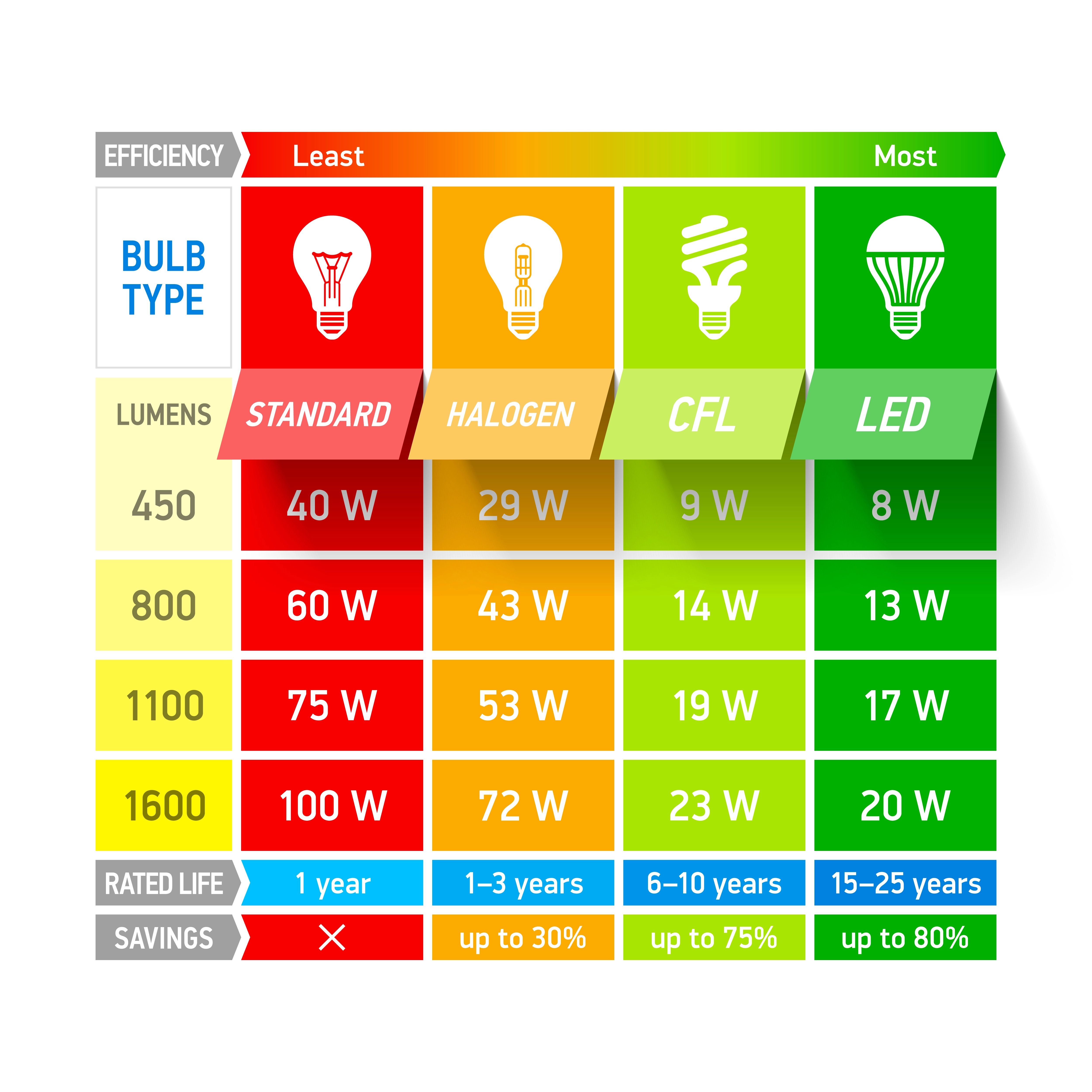Light bulbs, as with all technology, continue to evolve and change. Most homeowners are familiar with regular household light bulbs – the Bayonet Cap B22 and its smaller cousin, the B15, or the Edison Screw E27 and smaller E14. These are typically fitted into pendants, chandeliers, wall sconces, and floor and table lamps, while in downlights and spotlights, the standard bulbs are GU10, MR16 or MR11.
What all these bulbs have in common is that they are available in different technologies. You can discover traditional incandescent, halogen, CFL and LED bulbs as the main types of bulbs you would use around your home. For the downlight models, you have a choice of halogen or LED.
As halogens and LEDs are hot topics, let’s take a look at the difference between halogen and led bulbs.

LED vs Halogen: Pros and Cons
Halogen bulbs are a more established technology that has been readily available for home purchase for several decades. They became popular as they were a longer-lasting and slightly more energy-efficient option than regular incandescent bulbs.
Halogen bulbs have typically been less expensive to purchase than LED bulbs. However, that is rapidly changing as LED bulbs grow in popularity. Just a few years ago, it used to be that a Halogen bulb might cost £2 compared to a basic LED bulb at £20, but now the price differences are shrinking. For example, this E27 halogen is just £1, while this E27 LED bulb is £6.90. However, you will pay more if you are looking for a smart-enabled LED bulb.
| Incadescent | Halogen | LED | |
| % More efficient than Incandescent | – | 25 | 80 |
| Watts (for 1600 Lumens) | 100 | 77 | 20 |
| Rated Bulb Life (hours) | 1000 | 2000 | 20000 |
| Dimmable | On Wall | On Wall | On Wall (some), on App (some) |

However, halogen bulbs do not last as long as LEDs – typically around 1,000 hours compared to 20,000+ hours for LED bulbs. They also use more energy than LED bulbs, so you’ll see a higher electricity bill if you switch to halogens. If we compare led vs halogen power consumption to a 100W traditional incandescent bulb, a comparable halogen bulb will use 77W, while the LED bulb would be 20W.
On the plus side, halogen bulbs are brighter than LED bulbs and provide a more natural and pleasing light.
LED bulbs are more expensive to purchase but last much longer. They also use significantly less energy than halogen bulbs, so you’ll see lower electricity bills if you switch to LEDs. However, LED light can cause a flickering effect for some people, making them unpleasant to be around.
One of the greatest strengths of LED bulbs is that they easily integrate into a Smart-device enabled home. Using a Google Home or Amazon Echo, you can dictate the light intensity and colour, changing the mood of your home on a whim.
LED vs Halogen: Which is Better for Your home?
When comparing halogen light vs led light, it’s important to consider your needs. If you prefer a softer, more natural lighting, or the cheapest bulb option, you should consider halogen bulbs over the alternative.
However, if you are happy to invest your money upfront for long-term savings on energy and bulb replacements or want the ability to adjust the colour and brightness of your bulbs, LED will be the option for you.
Conclusion
Technology moves us forward. There is an argument for halogen bulbs still being relevant, and some homeowners will prefer the light they emit, but LED bulbs are the best option for most homeowners. They last much longer than other bulbs and use significantly less energy, which means you’ll see lower electricity bills if you switch to LEDs.
The flickering artefact we’ve mentioned above is becoming rarer as LED technology improves. Of course, one of the greatest strengths of LED bulbs is that they easily integrate into a Smart-device enabled home, which is not only on-trend but is also very practical.
FAQs
That is entirely a personal preference. If you want the cheapest short-term option or prefer a softer, more natural light, halogen bulbs are still available and may suit your needs. However, if you’re looking for long-term savings on energy and bulb replacements or want the ability to adjust the colour and brightness of your bulbs, LED bulbs are the best option.
The primary difference is that they are differing technologies. There are light bulbs available in both technologies for almost every light fitting type. When considering halogen light bulbs vs LED, keep in mind that halogens are cheap to buy, but LEDs are cheaper to run.
Because LED light bulbs consume less power and last 20-50 times as long as a halogen, it’s worth considering replacing your halogens with LEDs, especially if your existing halogen has recently blown. There is a higher initial purchase price, but even that disadvantage is shrinking every month.
Common questions we get here are “can you replace halogen bulbs with led bulbs?” and “can you put led lights in halogen fittings?” The simple answer is yes. Each light fitting will take a specific bulb type, for example, the bayonet cap B22 or the Edison screw E27. You can swap the halogen and LED bulbs designed to go in that fixture as you desire.
Leave a Reply